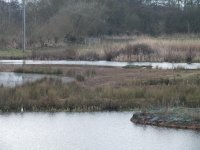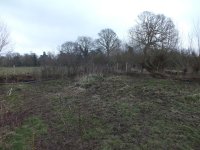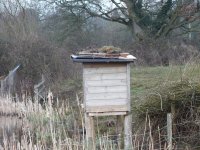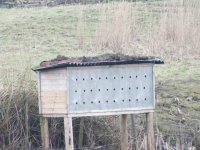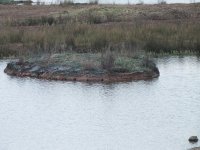-
Welcome to BirdForum, the internet's largest birding community with thousands of members from all over the world. The forums are dedicated to wild birds, birding, binoculars and equipment and all that goes with it.
Please register for an account to take part in the discussions in the forum, post your pictures in the gallery and more.
You are using an out of date browser. It may not display this or other websites correctly.
You should upgrade or use an alternative browser.
You should upgrade or use an alternative browser.
Upton Warren (16 Viewers)
- Thread starter andythomas
- Start date
More options
Who Replied?upstarts1979
Well-known member
Recent pics:
1. Double Pot Of Gold!
2. Common Snipe
3. Common Snipe
Rob
The shot of the snipe dropping into the 'juncus' patch, captures the ambience of what has now become the snipe capital of upton warren. This year it appears that the wintering flock of jack and common snipe have now relocated to this area of the reserve. The more you look at this picture the more it conjures up the whole snipe island event of the winter 2012-2013 - brilliant mate:t:John
ps I hope Peter E can put into words what I am actually trying to say
Last edited:
UW82
Well-known member
Recent pics:
1. Double Pot Of Gold!
2. Common Snipe
3. Common Snipe
Rob
Shots like no 2 and we will easily be able to pick out the Wilson's Snipe!
Des.
forgetfulelephant
Well-known member
Great pics.......love the 2nd Snipe one and the rainbow is awesome......sure I can see Zippy on one of the Islands....
Keith
Cheers Keith. You won't find Bungle-he's holding the camera! :-O
Rob
forgetfulelephant
Well-known member
Well done Mary.How many people have walked past that post(myself included) and not noticed "growths" like these.:t:
Rob if you find the gold i`ll be your best mate.
Love the back view of the Snipe. Shows their markings well.
Chris
Cheers Chris. If I find it I'll cut you in for a share! :t:
Rob
forgetfulelephant
Well-known member
The shot of the snipe dropping into the 'juncus' patch, captures the ambience of what has now become the snipe capital of upton warren. This year it appears that the wintering flock of jack and common snipe have now relocated to this area of the reserve. The more you look at this picture the more it conjures up the whole snipe island event of the winter 2012-2013 - brilliant mate:t:John
ps I hope Peter E can put into words what I am actually trying to say
Thanks John & I don't think Peter needs to rewrite what you summed up well. :t:
Rob
Spoonbill Finder
Well-known member
Only report today is from Dave J ; at Flashes Avocet 14, chiffchaff and an adult common gull.
In addition to Dave J's report I saw the following:
Flashes:
Curlew 11, Lapwing 4, Oystercatcher 2, Shelduck 1, Teal 7, BHG c100, Greylag 2, Stock Dove 2 (at least), Linnet 2 (at least), Buzzard 2, Kestrel 1, Peregrine 1.
Sailing Pool:
GC Grebe 6, Mute Swan 5, Tufted Duck 1 pair.
Moors Pool:
Snipe 15 (at least), Oystercatcher 4, Greylag 10, Cormorant 12, Herring Gull 2, LBBG 2, BHG c120, Gadwall 3 pairs, Pochard 3 (2 drakes), Shoveler 12, Teal 5 (inc 3 on North Moors Pool), Tufted Duck c20, Shelduck 1, GC Grebe 4, Little Grebe 3, Mute Swan 2, Water Rail 2, Kingfisher 1, Grey Heron 1, Green Woodpecker 1, Stock Dove 2.
There was also a mixed flock of Redwing and Fieldfare (about 50 birds in total) in the field behind the East Hide mid-afternoon.
It was particularly apparent how the numbers of Teal and Pochard have declined recently. Noticeable too was the paucity of Lapwings across the reserve today.
Last edited:
Thanks John & I don't think Peter needs to rewrite what you summed up well. :t:
Rob
I agree.
Peter
Sy V
Well-known member
Next Saturday I am going to do an 'all-dayer'... so I will be on the reserve from dawn till dusk and beyond... if anyone wants to avoid me I suggest you don't go next Saturday8-P
Noted - thanks! B
John Layj
Well-known member
Article about urban birdwatching, focusing on London. I've seen the Ring Necked Parakeets along the Thames, very strange!
http://http://www.telegraph.co.uk/earth/outdoors/outdoor-activities/9937825/Urban-birdwatching-is-taking-off.html
I saw into the teens of bird species in Digbeth on Sunday morning, no parakeets though.
http://http://www.telegraph.co.uk/earth/outdoors/outdoor-activities/9937825/Urban-birdwatching-is-taking-off.html
I saw into the teens of bird species in Digbeth on Sunday morning, no parakeets though.
keithr
Relapsus resurgam
read this about 10 times and can't figure it out... should I have read all the above article to get it?Article about urban birdwatching, focusing on London. I've seen the Ring Necked Parakeets along the Thames, very strange!
http://http://www.telegraph.co.uk/earth/outdoors/outdoor-activities/9937825/Urban-birdwatching-is-taking-off.html
I saw into the teens of bird species in Digbeth on Sunday morning, no parakeets though.
Cheers
Keith :t:
read this about 10 times and can't figure it out... should I have read all the above article to get it?
Cheers
Keith :t:
Keith, it puzzled me too. I think he is saying that in urban Digbeth he reached a score of somewhere between 10 and 20 different species. I haven't been able to make the web-link work to check if that is right.
Peter
binus1963
Well-known member
Article about urban birdwatching, focusing on London. I've seen the Ring Necked Parakeets along the Thames, very strange!
http://http://www.telegraph.co.uk/earth/outdoors/outdoor-activities/9937825/Urban-birdwatching-is-taking-off.html
I saw into the teens of bird species in Digbeth on Sunday morning, no parakeets though.
thats what he means he's seen at least 13 specie's down digbeth but no parakeets, if ya want parakeets go up sandwell valley i had 5 together earlier this year.
lesser kestrel
Well-known member
Keith
John told me of your donation. Thanks.
Paul
John told me of your donation. Thanks.
Paul
lesser kestrel
Well-known member
There are only two known RN Parakeet locations in the West Midlands region.
As part of the Eastside Development, a bird survey was undertaken in the Digbeth area during the spring of 2004.
Over 30 species of bird was observed. At least half of those were breeding.
As part of the Eastside Development, a bird survey was undertaken in the Digbeth area during the spring of 2004.
Over 30 species of bird was observed. At least half of those were breeding.
Last edited:
upstarts1979
Well-known member
Birding on the reserve today - Moors
(Work Party details later.)
On site from 8.45am till 7pm, weather cool NE breeze and cloudy.
During work 9 jack and at least 20 common snipe came off the west bank promontory. My first meadow pipit of the year went over to the east and another flew north in the evening. The redpoll continue to sing and call along the whole of the east track and were heard from the secret garden to the SE corner of the reserve, accompanied by a few siskin. Mistle thrush, song thrush, chaffinch and reed bunting all sang along the east side as well as green and great spotted woodpecker calling and drumming. To add to the delights of the east side a large flock of c150 winter thrushes fed the field behind the hide of which c120 were redwing and a Cettisand a couple of water rail called.
From the west side activity was less fruitful, but the feeding station held its usual species, with at least 20 reed bunting. Several snipe fed in the SW marsh and 1 in front of the concrete hide.
A male Brambling was seen at 11.30 according to the log book
Species count for the MOORS
GCG 6, little grebe 3, cormorant 6, mute swan pr, shoveler 14 (6 prs + 2 males), gadwall 6 (3 prs), teal ONLY 4 ( like Andy said a dramatic decrease - our wintering birds now moving off to sites east and north. There are usually some spring passage birds , so it is worth counting them for the records. Shelduck male, Pochard 2 (a pair), tufted 30, snipe 25, Jack snipe 9, oystercatcher 4 (2 prs), lapwing 3, Redshank - my first of the year, BHG 200, herring gull 1st winter, LBBG pr , mistle thrush 4 ( a pair on A38 field and another pr on east side), meadow pipit 2, redpoll 25, siskin 5, cettis one poss same bird heard on east side (am) and concrete hide area this evening.
Forgot to add, at least 1 singing skylark south of moors , Hobdon hall farm. My 4th year tick of the day
(Work Party details later.)
On site from 8.45am till 7pm, weather cool NE breeze and cloudy.
During work 9 jack and at least 20 common snipe came off the west bank promontory. My first meadow pipit of the year went over to the east and another flew north in the evening. The redpoll continue to sing and call along the whole of the east track and were heard from the secret garden to the SE corner of the reserve, accompanied by a few siskin. Mistle thrush, song thrush, chaffinch and reed bunting all sang along the east side as well as green and great spotted woodpecker calling and drumming. To add to the delights of the east side a large flock of c150 winter thrushes fed the field behind the hide of which c120 were redwing and a Cettisand a couple of water rail called.
From the west side activity was less fruitful, but the feeding station held its usual species, with at least 20 reed bunting. Several snipe fed in the SW marsh and 1 in front of the concrete hide.
A male Brambling was seen at 11.30 according to the log book
Species count for the MOORS
GCG 6, little grebe 3, cormorant 6, mute swan pr, shoveler 14 (6 prs + 2 males), gadwall 6 (3 prs), teal ONLY 4 ( like Andy said a dramatic decrease - our wintering birds now moving off to sites east and north. There are usually some spring passage birds , so it is worth counting them for the records. Shelduck male, Pochard 2 (a pair), tufted 30, snipe 25, Jack snipe 9, oystercatcher 4 (2 prs), lapwing 3, Redshank - my first of the year, BHG 200, herring gull 1st winter, LBBG pr , mistle thrush 4 ( a pair on A38 field and another pr on east side), meadow pipit 2, redpoll 25, siskin 5, cettis one poss same bird heard on east side (am) and concrete hide area this evening.
Forgot to add, at least 1 singing skylark south of moors , Hobdon hall farm. My 4th year tick of the day
Last edited:
upstarts1979
Well-known member
birding at the Flashes this Evening
I walked along the southern shore of the sailing pool, to be greeted by a grey wag on the jetty and a singing goldcrest next to the spruce trees. Just past the bridge a little owl called it must have been perched up in the hen pool silver birches, it then called from the edge of the sailing pool - yet another year tick for me. The Flashes echoed to a raucous cacophony of squabbling BHG's, with a massive roost for the spring, of 1500 birds, but no other species amongst them.
Unfortunately there were no lapwings, which is worrying as they should be displaying by now.
species count for the Flashes:
Shelduck pr, mallard 20, greylag 2, coot 10, curlew 20, avocet 15, oystercatcher pr, BHG 1500, buzzard, little owl, stock dove, redwing 5,
62 species seen today
I walked along the southern shore of the sailing pool, to be greeted by a grey wag on the jetty and a singing goldcrest next to the spruce trees. Just past the bridge a little owl called it must have been perched up in the hen pool silver birches, it then called from the edge of the sailing pool - yet another year tick for me. The Flashes echoed to a raucous cacophony of squabbling BHG's, with a massive roost for the spring, of 1500 birds, but no other species amongst them.
Unfortunately there were no lapwings, which is worrying as they should be displaying by now.
species count for the Flashes:
Shelduck pr, mallard 20, greylag 2, coot 10, curlew 20, avocet 15, oystercatcher pr, BHG 1500, buzzard, little owl, stock dove, redwing 5,
62 species seen today
Last edited:
Phil Andrews
It's only Rock and Roller but I like it

I walked along the southern shore of the sailing pool, to be greeted by a grey wag on the jetty and a singing goldcrest next to the spruce trees. Just past the bridge a little owl called it must have been perched up in the hen pool silver birches, it then called from the edge of the sailing pool - yet another year tick for me. The Flashes echoed to a raucous cacophony of squabbling BHG's, with a massive roost for the spring, of 1500 birds, but no other species amongst them.
Unfortunately there were no lapwings, which is worrying as they should be displaying by now.
species count for the Flashes:
Shelduck pr, mallard 20, greylag 2, coot 10, curlew 20, avocet 15, oystercatcher pr, BHG 1500, buzzard, little owl, stock dove, redwing 5,
Little Owl is new for the year - year list is now 97 and March's total increased to 88.
upstarts1979
Well-known member
Final work party on the habitat
Today we finished off all the breeding habitat work on Amy's marsh.
Not expecting such a good turn out (owing to 6 of the regulars on Hols or other commitments), 13 of us split into groups to tackle and COMPLETE all the proposed jobs.
1st The west grassy arm of the Broadmeadow pool, was strimmed short and all the rank vegetation was cut and removed off site. The juncus area in the foreground has been left long to encourage snipe. This is where all the jacks have been wintering.
2nd The SE corner boundary fence was reinforced with 8 foot posts and barbed wire. This will hopefully prevent the grazing stock from breaking out and also stop local kid incursions.
3rd The damaged fence behind the east hide was also repaird and improved and interspersed with thorn cuttings to encourage bramble.
4th All the previous willow cuttings were gathered up and moved to the eastern periphery.
5th We installed a 'living roof' - never done one before . So don't laugh, it doesn't look aesthetically pleasing, but give it chance. I extended the front overhang to about 8 inches from 1 inch using bitumen corrugated roofing, which covered the whole of the roof. The whole roof was then covered by heavy duty polythene and carpet on top of that. The polythene will hold the water and the carpet will remain moist. The turf was then put on top, unfortunately I could only find bricks to hold it all in place. In time the grass will grow over the brick. If not we could have another look next year.
6th The contractors - treated all the shingle islands to kill off rank vegetation
photo's
1. east arm of Broadmeadow pool
2. SE boundary fence
3 & 4. sand martin bank living roof
5. contractors work 'spraying '
Today we finished off all the breeding habitat work on Amy's marsh.
Not expecting such a good turn out (owing to 6 of the regulars on Hols or other commitments), 13 of us split into groups to tackle and COMPLETE all the proposed jobs.
1st The west grassy arm of the Broadmeadow pool, was strimmed short and all the rank vegetation was cut and removed off site. The juncus area in the foreground has been left long to encourage snipe. This is where all the jacks have been wintering.
2nd The SE corner boundary fence was reinforced with 8 foot posts and barbed wire. This will hopefully prevent the grazing stock from breaking out and also stop local kid incursions.
3rd The damaged fence behind the east hide was also repaird and improved and interspersed with thorn cuttings to encourage bramble.
4th All the previous willow cuttings were gathered up and moved to the eastern periphery.
5th We installed a 'living roof' - never done one before . So don't laugh, it doesn't look aesthetically pleasing, but give it chance. I extended the front overhang to about 8 inches from 1 inch using bitumen corrugated roofing, which covered the whole of the roof. The whole roof was then covered by heavy duty polythene and carpet on top of that. The polythene will hold the water and the carpet will remain moist. The turf was then put on top, unfortunately I could only find bricks to hold it all in place. In time the grass will grow over the brick. If not we could have another look next year.
6th The contractors - treated all the shingle islands to kill off rank vegetation
photo's
1. east arm of Broadmeadow pool
2. SE boundary fence
3 & 4. sand martin bank living roof
5. contractors work 'spraying '
Attachments
Last edited:
Similar threads
- Replies
- 1
- Views
- 1K
Users who are viewing this thread
Total: 17 (members: 1, guests: 16)




